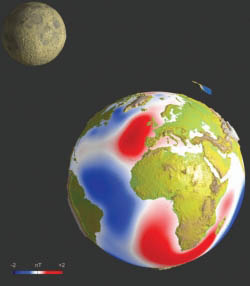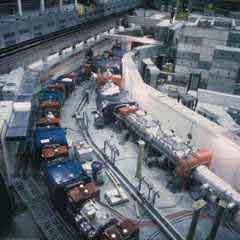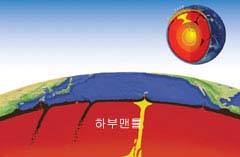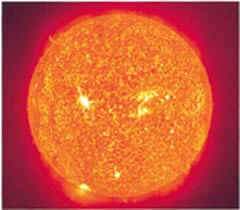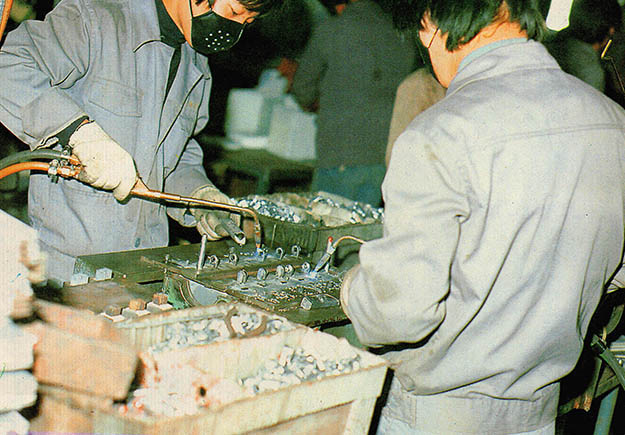단백질은 과히 신통치 않게 들리는 단어로서 영양분을 연상시킨다. 우리는 단백질과 많은 탄수화물과 약간의 지방질을 섭취해야 한다. 사람들은 가공식품을 살 때 함유목록을 훑어보곤 하는데 이는 지방질보다는 단백질의 양이 더욱 많기를 기대하기 때문이다. '고단백질' 시어리얼이 있는가 하면 '단백질 함유량이 높은' 샴푸도 있다.
사실인즉 단백질은 대단한 단어로서 우주의 기막힌 부분에 해당한다. '단백질(프로틴)'은 그리스어에서 유래된 것으로 '가장 중요한'이란 의미를 가졌다. 그 의미가 그렇듯이 단백질이 없다면 생명체의 존재도 불가능하다.
단백질이란 이름은 유기합성물들의 이름짓기를 즐긴 스웨덴 화학자 존스 제이콥 버젤리우스가 추천했다. 그러다가 1839년 달걀흰자위(카제인)나 혈청의 글로블린처럼 알부민을 함유한 물질에 관한 기초공식을 만들었던 네덜란드의 화학자 제라더스 요하네스 멀더가 버젤리우스의 추천을 채택함으로써 공용어가 됐다.
탄수화물과 지방질은 탄소와 수소와 산소를 공급하지만(각각 다른 방법으로) 단백질은 그 뿐만 아니라 질소와 황 그리고 가끔씩 인까지도 공급한다. 단백질은 복잡하며 과학자들은 이제야 살아있는 세포속의 그 복잡한 범위를 깨닫기 시작했다.
유기물질에 관한 초기의 분석방법은 단백질의 구조를 밝혀내기엔 너무 어수룩했으나 그 구성요소인 아미노산에 대한 분석은 가능했다. 아미노산은 수소 및 질소원자들 탄소와 수소 산소원자들의 집단 그리고 특정한 아미노산을 규정짓는 원자들로 구성됐다.
1923년에 또다른 스웨덴 화학자인 테오도어 스베드버그가 원심분리기를 발명한 후에(이로 인해 그는 노벨상을 수여받았다) 과학자들은 침전속도를 토대로 다양한 단백질의 분자량을 측정할 수 있게 됐다. 그 결과는 놀랄만했는데 어떤 단백질의 분자량은 수백만에 달해 그 구조가 매우 복잡하다는 사실이 확인됐다.
단백질의 구조를 파악하는데 도움을 주는 보다 새로운 기술들도 등장했다. 핵자기공명기 색층분석법 분광광도측정법 X선회절 등이 바로 그것이다. 이론적으로는 엄청난 수의 아미노산이 가능하지만 지구상의 단백질들은 고작 20여종의 아미노산을 포함하는 것으로 판명됐다. 아마도 외계인의 살코기는 지구인의 것과 동일한 성질이 아니기가 쉬울 것이다.
오랫동안 과학자들은 자신들의 시험관내에서 발견한 단백질에 관한 사실들이 살아있는 세포속의 단백질에서도 나타나리라고 믿었으나 그러한 믿음은 약간의 자만으로부터 비롯된 것으로 판명됐다. 아직도 세포단백질에 관해 해결되지 않은 의문들은 과학자들을 바쁘게 만들고 있는데 이는 단백질이 스스로 접히거나 줄기모양이 되거나 잘리지 않기 때문이다. 이렇게 되려면 단백질은 무엇인가로부터의 도움을 필요로 한다.
여기서는 '접힌다'는 말이 핵심이 된다. 단백질의 아미노산 구성성분들은 적정한 요소들이 적정한 위치에서 적정한 작업을 담당하도록 정확하게 배열돼 있어야 한다. 여기 있어야 할 질소원자가 저쪽에서 다른 목적으로 방황하고 있을 수 없다. 메리 제인 게딩과 조셉 셈부르크는 이토록 신기한 세포단백질의 기능을 샤프롱(보호자)이라고 부른다. 이러한 기능은 1)복잡한 단백질분자가 적절하게 접히도록 돕기 위해서 2)부분적으로 접혔거나 활동하지 않는 단백질을 안정시키기 위해서 3)조립되고 분해되는 세포의 거대분자들을 재배열시키기 위해서 4)환경의 압력에 처해있는 단백질을 보호하기 위해서 그리고 5)파괴시킬 단백질을 선별하기 위해서 존재하는 것처럼 보인다.
이와같은 연구들은 난해한 것처럼 들리지만 매우 중요한 것이다. 우리가 살아 숨쉬고 있는 만큼 생명에 관해 가능한한 많이 이해하지 말란 법도 없지 않은가? 단백질에 관한 새로운 분자생물학적 연구는 현재는 치유가 불가능한 각종 질병을 이해하고 싸워 이기도록 가능하게 할 수 있을는지 모른다. 보다 좋은 약이 나와 다른 해를 주지 않고서도 세포들이 스스로 낫도록 해줄 수도 있다. 샤프롱을 이용함으로써 생물공학은 지금은 꿈도 못꾸는 중요한 인체 단백질을 대량으로 생산할 수 있을는지도 모른다.
단백질은 생산조립기계나 물을 이동시키는 양수기 혹은 실질적으로 생명체를 움직이는 엔진으로 비유되기도 한다. 최근 한 학회모임에서 제기된 중요한 질문하나는 단백질기계가 어떻게 화학에너지를 사용하는가였다. 어떤 사람들은 그 비결이 형태의 변화에 있다고 하나 다른 이들은 동의하지 않는다. 그 진리를 찾기는 어려운데 이유는 관계하는 각 부분들이 무엇인지 또 각 반응을 매개하는 중간화학 반응의 구분, 상황변화를 설명하는 속도들의 측정 및 각종 화학반응이 어떻게 수행되는가를 이해하기 위한 단백질의 상세한 구조설명이 필요하기 매문이다. 이 모든 과정이 현재는 충분히 파악되지 못한 것이다.
생화학자들과 분자생물학자들은 단백질에 관한 연구를 계속할 것이기 때문에 계속 지켜봐야만 한다. 프리만 다이슨은 생명의 진화에 있어 단백질과 DNA중 어느 것이 먼저였는냐라는 질문을 받자 단백질이라고 대답했다.
단백질에 대한 이해는 인류로 하여금 세포병리학 뿐만 아니라 생명 그 자체의 시초에 얽힌 시비를 탐구하는데도 도움을 줄 것이다.
Protein is a word that doesn't sound remarkable. It brings to mind nutrition - you should eat protein, lots of carbohydrate and some fat. You look at the listed contents of packaged foods, hoping to find that the amount of protein is more than the amount of fat. There are "high protein" cereals and "protein-rich" shampoos.
The fact is, protein is a remarkable word and an even more remarkable part of the universe. "Protein" comes from a Greek word meaning "of first importance" - and so it is, for without proteins, there would no life.
Protein was the name suggested by that inveterate namer of organic compounds, the Swedish chemist Jons Jakob Berzelius. The Dutch chemist Geratdus Johannes Mulder used Berzelius' suggestion in 1839 when he worked out a basic formula for what were then called albuminous compounds, like egg white (casein) or blood globulin.
Carbohydrates and fats supply carbon, hydrogen and oxygen (in a various patterns), but proteins supply, in addition, nitrogen, sulfur and often phosphorus. Proteins are complicated, and scientists are only now discovering the full extent of those complications in the living cell.
Early methods of organic analysis were too crude to decipher the structure of proteins, but it was possible to analyze their building blocks of amino acids, which have a basic pattern of hydrogen and nitrogen atoms, a group of carbon, hydrogen and oxygen atoms, and a branch group of atoms that identifies a particular amino acid.
After another Swedish chemist, Theodor Svedberg, invented the ultracentrifuge in 1923 (for which he received the Nobel Prize), scientists were able to determine the molecular weights of many proteins on the basis of their rate of sedimentation. The results were astonishing, for some proteins turned out to have molecular weights in the millions, indicating that their structure was exceedingly complex indeed.
Newer technology came along to help examine the structure of proteins - nuclear magnetic resonance, chromatography, spectrophotometry, X-ray diffraction. It was found that in spite of the theoretically mammoth number of possible amino acids, proteins here on Earth contain only 20 varieties. It's quite probable that steak from anothor planet would not agree with a Terran.
For years, scientists believed that what they discovered about proteins in their test tubes was true of proteins in the living cell, but that turns out to have been a bit of hubris. Unanswered questions about cellular protein are keeping scientists busy, for it seems that proteins do not fold, spindle or mutilate by themselves. They need help.
"Folding" is the key word. A protein's amino acid components have to be arranged correctly in order for the right elements to be in the right place to do the right job. You can't have a nitrogen atom wiggling off there when it should be here, up against something else. Mary-Jane Gething and Joseph Sambrook have described the fascinating functions of cellular proteins called chaperons. These seem to exist in order to 1) help a complicated protein molecule get folded properly, 2) stabilize partially folded intermediates or inactive proteins, 3) rearrange cellular macromolecules being assembled and disassembled, 4)protect proteins that are under environmental stress and 5) pick out proteins for destruction.
All of this research may sound esoteric, but it's of vital importance. You are alive - why not understand as much about life as possible? The new molecular biology research on proteins may make it possible to understand and cope with various diseases now incurable. There could be better medicines, designed to help cells heal themselves and do no harm. Using chaperons, biotechnology might be able to produce important human proteins in quantities undreamed of now.
Proteins are also described as assembly line producers, as pumps for transfer and as the engines that literally make life move. At a recent conference the big question was - - how do protein machines use the chemical energy? Some people think the trick is done by changing shape, but otheres disagree. Finding out the truth is tricky, since it's necessary to make an inventory of the parts involved, identify the chemical intermediates of each reaction, measure the rate constants for the transitions, and describe the detalied structure of the protein to understand how the various chemical reactions are made to work. Not one of those steps is sufficiently known right now.
Biochemists and molecular biologists will continue their research on proteins, so keep posted. When Freeman J. Dyson was asked which came first in the evolution of life, proteins or DNA, he answered proteins.
Understanding those proteins will help humanity delve further into the mysteries not only of cellular pathology, but into the origin of life itself.
이 기사의 내용이 궁금하신가요?
기사 전문을 보시려면500(500원)이 필요합니다.
1992년 06월 과학동아 정보
🎓️ 진로 추천
- 생명과학·생명공학
- 화학·화학공학
- 의학








